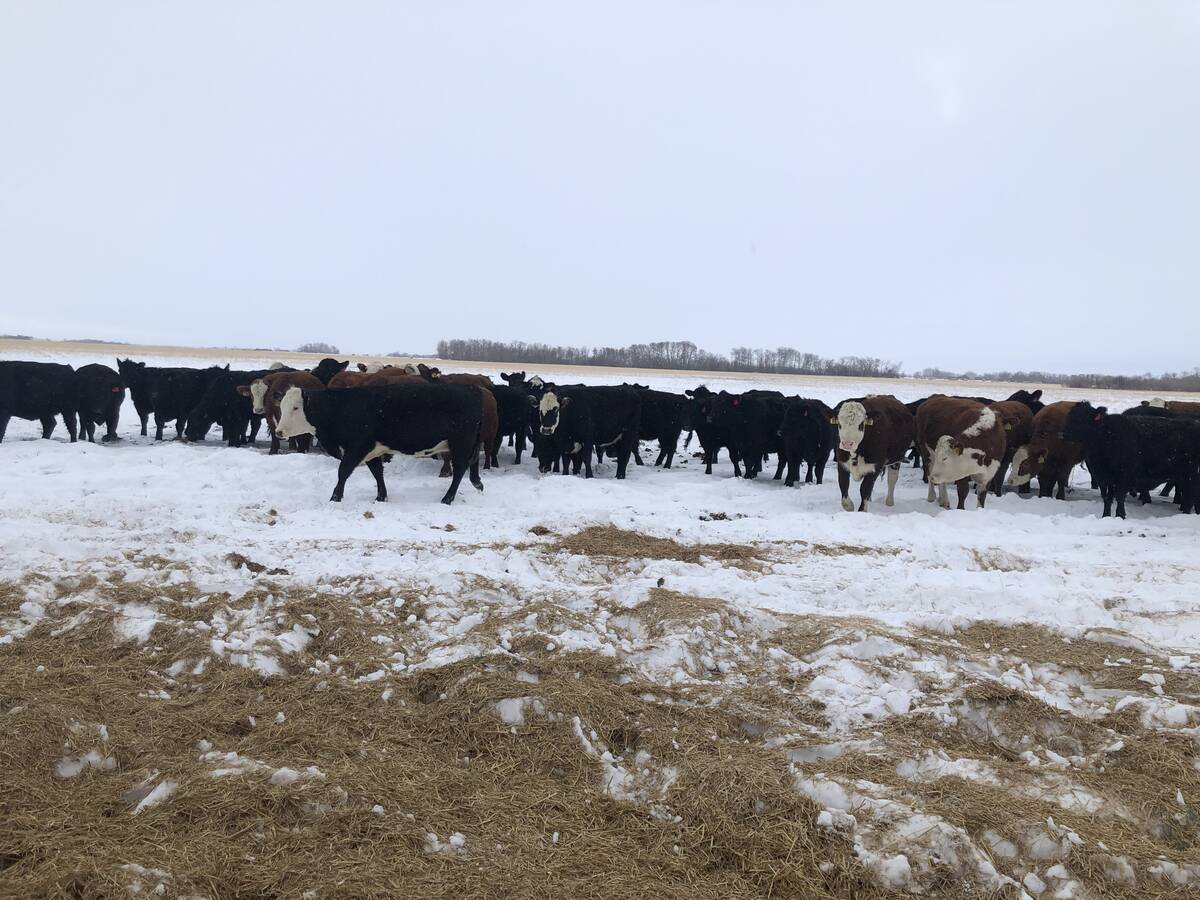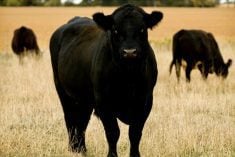Producers could optimize lifelong beef cattle health and performance by supplementing with organic trace mineral supplements, including in utero.
Mark Gerber, Zinpro technical sales specialist and master farrier, explained the importance of nutrition and mineral supplementation to attendees at Grey Bruce Farmers’ Week Beef Day earlier this year.
“When we talk about cow-calf nutrition, we want to look at — from birth — the growth, the production and reproduction,” Gerber says. “On a beef cow, getting them bred quicker makes you more pounds of beef to sell.”
Read Also

Picking the most efficient cows to rebuild your cow herd
A new cow ranking system to help beef farmers and ranchers pick the most efficient cows as they rebuild their herds.
He presented results from peer-reviewed controlled research of feeding 60 ppm of Zinpro’s Availa 4 mineral supplement year-round. Availa 4 contains organic zinc, manganese, copper and cobalt. The research linked supplementation to higher conception and pregnancy rates, heavier weaning weights and heavier hot carcass weights.
An Availa 4 versus sulphate supplements study of pubertal bull scrotal development showed animals with a higher point of nutrition went into production faster. A secondary study of sperm motility showed improvement for animals supplemented with sulphate, with increases in rapid motility and progressive motility.
Gerber says that extended calving intervals cost approximately five dollars a head a day, but year-round supplementation products, such as Availa 4 and Availa Plus, improved conception rates and sperm motility, increased embryo quality and survival and decreased calving intervals.
A 97-day University of Tennessee study of 38 Angus cow-calf pairs split them into fescue and clover pastures at approximately three to four pairs per pasture. The cows were divided into groups of control, sulphate supplements only, and Availa Plus. The data revealed increased reproductive efficiencies in the Zinpro-supplemented cow-calf pairs.
Availa Plus cows provided 15.9 culturable eggs/per pasture, while the control had 11.8.
Zinpro cows cultivated double the grade one through three transferable embryos and freezable grades one and two embryos, resulting in far fewer culturable oocytes (3.1) to transferable embryos compared to the control’s seven.
“When we look at reproductive efficiency, the statistics are very tight, very highly predictable here in this particular research study,” he says.
Based on in vitro fertilization fixed costs of $925 plus variable costs of $55/embryo, Gerber says the control diet costs $398/ embryo. In contrast, Availa Plus cost of $252/embryo and pregnancy retention post-insemination was 11 per cent better from day 17 to 60 than control.
“The key when you’re looking at a balance of inorganics with organic is trying to get the most soluble form,” he says. “And still be cost-effective and get the best reproductive gain possible.”
A Montana State University study showed increased reproductive performance when heifers were fed Availa 4 supplements 30 to 60 days before calving, with statistically significant differences in cycling activity, calving interval and pounds of calf at birth compared to the control and sulfate-only groups.
“Ten days faster (to breeding) versus not feeding anything or eight days statistically better than feeding just straight sulphate,” says Gerber.
He shared that Availa 4 top dressing studies reveal improved newborn mineral status, colostrum quality, milk production and decreased scours.
A 70-day Israeli dry-cow study of Availa 4 against sulphates recorded increased colostrum over the inorganic group, ensuring increased passive immunity transmission and decreased incidence of sickness, scours and mortality due to maternal nutrition. Another study showed increased milk production in first-calf heifers over control cows, as well as inorganic supplemented cows. He says by pre-serving condition, the cow needn’t pull minerals off bone and tissue.
A University of Oregon study showed feeding Availa 4 in the third trimester increased calf liver zinc levels over control animals and sulphate cows, and added pounds of saleable beef.
Additionally, during the feedlot growing phase, only 20 per cent of Availa 4 calves required BRD treatment compared to 59 per cent of sulfate calves (due to increased retreats) and 42 per cent for control calves.
– Diana Martin is a reporter with Farmtario.
















